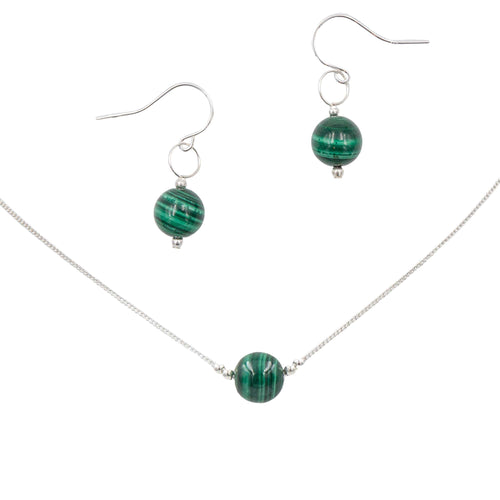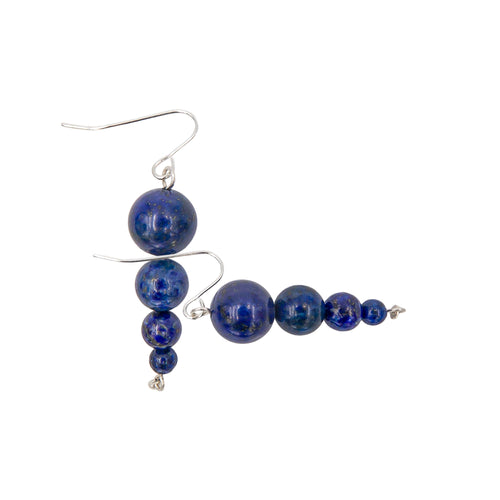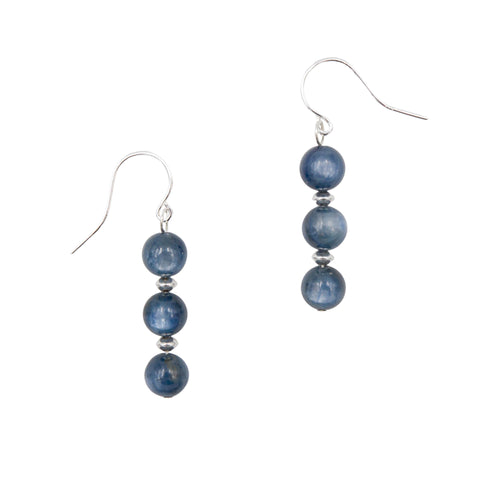Is All Of Your Jewelry Hypoallergenic?
All of my jewelry is either naturally nickel free or meets the EU (European Union) Nickel Directive. You will always know from my product details what materials were used.
What is "Hypoallergenic"?
The term hypoallergenic means "below the normal level" of allergenic. The term was coined by the cosmetics industry in the 1950s and became a popular marketing term for jewelry soon afterward. Sometimes "nickel free" and "hypoallergenic" are confused as being synonymous, but this is not true. Hypoallergenic does not mean nickel free, nor does it have a legal or medical definition for use in jewelry. This is why I use components that are either naturally nickel free or meet the EU Nickel Directive.
What is "Nickel Free"?
The term "nickel free" can be confusing since jewelry marked nickel free is still allowed to contain a very small amount of nickel - so small it takes extremely sensitive instruments to measure it.
There is no US standard for nickel in jewelry. There is no legal or medical definition of "nickel free" or "hypoallergenic" jewelry in the US - jewelry can be sold with those labels but still have nickel. Therefore, to be safe, I only use jewelry components that either have no nickel by definition (e.g., copper or 925 sterling silver) or meet the EU Nickel Directive (see below). You will know what metals are used in my product descriptions for everything I create.
The European Union's (EU) Nickel Directive limits the amount of nickel that may be released onto the skin from jewelry and other products. The EU Directive's type of measurement is different than measuring the percentage of nickel that exists in an alloy's composition; it measures how much nickel will actually migrate to your skin - which is what you want to limit.
In the European Union, Jewelry marked as "nickel free" must meet the strict EU Nickel Directive. If you are sensitive to nickel, this is the best standard for you to use when purchasing "nickel free/hypoallergenic" mixed metal (alloys or plated). All of my jewelry meets the EU Nickel Directive (or is naturally nickel free).
What Are Naturally Nickel-Free Metals?
These are metals or alloys that, by definition, do not contain any nickel. The jewelry I create is made from these nickel free metals or meets the EU Nickel Directive. The nickel free metals are:
STERLING SILVER is an alloy that does not contain any nickel, so it is wearable by virtually everyone. Sterling silver is made of at least 92.5% pure silver, thus the term "925 Sterling Silver" or ".925". Typically the remaining 7.5% consists of copper. The 92.5% of pure silver is why you sometimes see "925" stamped on sterling silver items (or "999" for fine silver, which is 99.9% pure silver). If you have an allergy to copper (which is extremely rare), be aware that sterling silver might be an issue for you.
Copper - a nickel free element
Copper is an element and thus naturally nickel free. Tarnish-free (non-tarnish) copper is protected with a coating that keeps it from darkening or reacting with your skin to turn green. If it is not protected, it will darken and get a (possibly dark, possibly green) patina over time. This unprotected copper can discolor your skin when worn as snugly fitting rings or bracelets; this is not an allergic reaction. (An allergy to copper is rare, but if you are allergic to copper, it's important to know what metal alloys may contain copper.) For all of my copper jewelry, I state clearly in the description if it has been coated with a tarnish protectant, so you know what to expect. Some pieces are not coated because the beauty of the copper patina is part of the piece. Other pieces are coated to keep them shiny and bright or to keep the created patina or colors from darkening.
Titanium - a nickel free element
Titanium is an element and thus naturally nickel free. Titanium is frequently used in medical implants. If you would like titanium ear wires, please let me know, and I can change the ear wires for you.
Nickel free yellow gold
14kt yellow gold is commonly made of the following materials: 58% pure gold, 25% pure silver, and 17% pure copper. This is true yellow gold jewelry, not gold-plated. If the price is too good to be true, it's gold-plated, which is likely to contain nickel. Be aware that white gold commonly contains nickel (added for both color and strength). I don't use white gold for any of my jewelry.
Possibly Nickel Free Metals - but be careful
Alloys or plated items may contain nickel, so you need to be aware of what is in the alloy or under the plating if you buy plated or mixed metals. I only use metals that are naturally nickel free or meet the EU Nickel Directive explained above. You will always know from my product details what materials were used.
Here are types of metal that may have nickel if purchased elsewhere:
-
SILVER FILLED wire is made by applying a "thick" layer of 925 sterling silver over a base metal, usually brass (but it could be some other metal or an alloy from other sources if they do not say they are nickel free or meet the EU Nickel Directive). The layer of sterling silver for silver-filled items is hundreds of times thicker than silver plate and stands up to wear very well over the years. Silver-filled wire is used extensively in jewelry to keep costs down (compared to using sterling silver). In the jewelry market, most jewelry marked "silver" uses either silver-filled or silver-plated components. If the piece is sterling silver, it will clearly say so and be more expensive. My jewelry descriptions will clearly state if the piece is made with ARGENTIUM® Silver, sterling silver, silver fill or silver plate.
-
SILVER PLATED items have a thin coating of 925 sterling silver over a base metal or alloy (mix of metals; some may contain nickel unless they state they are nickel free or adhere to the EU Nickel Directive). Silver plate is used extensively in jewelry to keep costs even lower (compared to silver filled). In the jewelry market, inexpensive jewelry (particularly mass-produced) is usually silver-plated if it says only "silver." Silver plate will wear off if the item experiences a lot of "wear and tear" - e.g., a silver plated ring would be a bad choice for longevity. A silver plated necklace that is worn daily would also get a lot more "wear," but as a piece of your collection that is rotated, the wear will be much less. If you have allergies, be aware that for silver-plated items, the protecting layer of silver will wear off eventually, and you may be allergic to the metal or alloy that was plated. For any silver plate, I use items that are silver-plated over copper or brass to avoid nickel allergy issues. You will always know by my product descriptions what you are getting.
-
GOLD PLATED items have a very thin coating of gold over a base metal or alloy. Be aware that many gold-plated items on the market (but not all) have a nickel plate under the final gold plate, so gold-plated items may not be a good choice if you have a nickel allergy unless you are sure of the metal(s) under the plating. FYI - Many hand lotions will accelerate tarnish on gold plated jewelry and can result in a black color within days of handling.
Is Surgical Stainless Steel Hypoallergenic?
Surgical Stainless Steel used by most jewelry makers does contain a small percentage of nickel. However, according to the Mayo Clinic, it's generally well tolerated by those with a nickel allergy. If you are very sensitive, however, you may want to avoid surgical stainless steel (and stainless steel) unless stated that it specifically complies with the EU Nickel Directive. Jewelry that complies with the EU Nickel Directive has a much lower amount of nickel than regular "surgical" stainless steel. Because it does contain nickel, I don't use Surgical Stainless Steel for my jewelry.
REGARDING EARRINGS: If you have an allergy to nickel, you should be safe buying any of my earrings per the information above. But feel free to contact me about swapping out ear wires to your preferred metal if you wish.
You are always safe ordering because I have 100% Guaranteed Free Returns!









